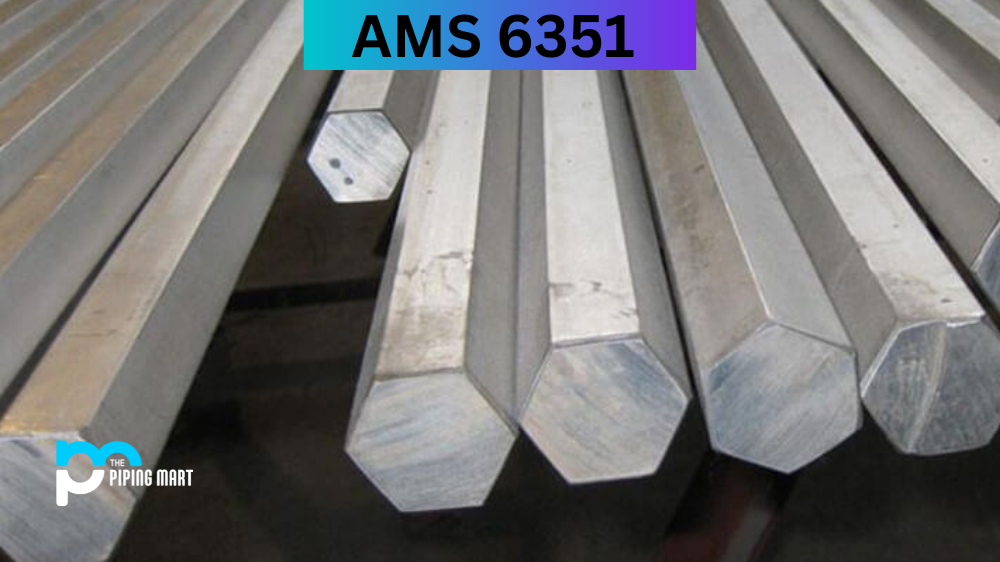Stellite 6B is a cobalt-based alloy known for its exceptional hardness, wear resistance, and corrosion properties. It is widely used in industries where severe wear, heat, and chemical resistance are essential requirements. Developed by Haynes International, Inc., Stellite 6B is a robust material with multiple industrial applications.
In this blog, we will dive deep into understanding the composition, properties, uses, heat treatment, welding, and corrosion-resistant properties of Stellite 6B.
Stellite 6B Composition
Stellite 6B is composed of about 27% to 32% of chromium, 3% to 4% molybdenum, 1.4% to 2% carbon, 3% to 3.5% tungsten, 1% to 1.5% silicon, and 1.5% to 2.5% iron. This composition gives Stellite 6B excellent abrasion, impact, and corrosion-resistant properties.
| Element | Content % |
|---|---|
| Cobalt, Co | 67.0 |
| Chromium, Cr | 32.0 |
| Tungsten, W | 5.5 |
| Carbon, C | 1.4 |
| Iron, Fe | 0.03 |
| Nickel, Ni | 0.03 |
| Mangangese, Mn | 0.02 |
| Silicon, Si | 0.02 |
| Molybdenum, Mo | 0.015 |
Stellite 6B Physical Properties
Stellite 6B has a density of 8.3 g/cm³, and its melting point is around 1280°C. It has a thermal conductivity of 24.9 W/mK and an electrical resistivity of 53.9 microhm-cm. Adding to its unique properties, it has a coefficient of thermal expansion of 13.5 µm/m. ⁰C, which makes it stable at a wide temperature range.
| Properties | Metric | Imperial |
|---|---|---|
| Density | 8.387 g/cc | 0.3030 lb/in³ |
| Melting Point | 1265 – 1354 °C | 2309 – 2469 °F |
Stellite 6B Mechanical Properties
Stellite 6B has an exceptionally high hardness of 38 HRC, critical for its use in heavy-duty industrial applications. A low coefficient of friction demonstrates its high wear resistance. It has excellent impact strength and can withstand even the harshest environments, making it an ideal solution for aerospace, oil and gas, mining, and power generation industries.
| Properties | Metric | Imperial |
|---|---|---|
| Hardness, Brinell | 102 | 102 |
| Hardness, Knoop | 414 | 414 |
| Hardness, Rockwell A | 71 | 71 |
| Hardness, Rockwell C | 41 | 41 |
| Hardness, Vickers | 396 | 396 |
| Tensile Strength, Ultimate | 976 MPa | 142000 psi |
| Tensile Strength, Yield | 638 MPa | 92500 psi |
| Elongation at Break | 6% | 6% |
| Modulus of Elasticity | 214 GPa | 31000 ksi |
| Charpy Impact | 8.00 J | 5.90 ft-lb |
Stellite 6B Uses
Stellite 6B is used in fluid valves, hot extrusion dies, high-temperature bearings, and protection against erosion, abrasion, and corrosion. Its chemical resistance makes it ideal for use in pumps, valves, and other equipment in the chemical industry. In the aerospace industry, it is used in components that experience high-stress levels, such as engine turbine blades, exhaust valves, and fuel injector components.
Stellite 6B Heat Treatment
Heat treating Stellite 6B involves heating the material to a temperature between 950 and 1010°C, followed by air cooling. This process helps relieve the residual stresses caused by machining and welding and increases the strength and hardness of the alloy.
Stellite 6B Welding
Stellite 6B can be readily welded using various welding processes, including TIG, MIG, and plasma welding. However, its high-temperature strength and low ductility require skilled craftsmanship to ensure a successful weld. After welding, stress relief heat treatment is essential to eliminate the risk of stress corrosion cracking.
Stellite 6B Corrosion Resistant
Stellite 6B exhibits good corrosion and oxidation resistance to most chemicals and corrosive environments. The combination of tungsten, molybdenum, and chromium gives it excellent immunity to pitting, forming a passive oxide film on the surface that protects the material against corrosion. This property is ideal for chemical plants, oil refineries, and other corrosive environments.
Conclusion
Stellite 6B is a valuable material recognized for its exceptional hardness, wear resistance, and corrosion-resistant properties. It is used widely in aerospace, power generation, oil and gas, and mining. Its unique properties make it ideal for heavy-duty applications, where the material can withstand harsh conditions and continued use. Overall, Stellite 6B is an excellent choice for applications requiring high wear resistance and chemical and thermal stability, and we can expect it to remain in demand for many years.




